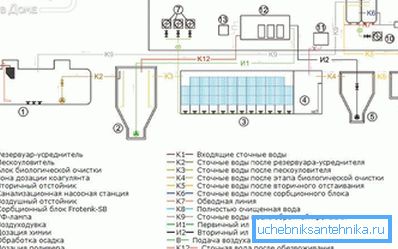How to choose a wastewater treatment system
Currently, one of the most important problems facing humanity is the preservation of the purity of the environment. As a result of the household activities of people, a huge amount of various harmful impurities, chemicals, emulsions and human residues enter the groundwater and water bodies, which leads to serious pollution of the aquatic environment. Wastewater treatment systems avoid these problems and prevent the ecological system from being disturbed, as they clean contaminated water before it enters the water.
Similar designs come in two varieties:
- consisting of a chain of tank stations;
- monoblock containers with grinders, filters and various cleaning elements.
Sewage treatment plants are used by industrial enterprises, they are installed in settlements without centralized sewage.
Monoblock containers, in which the separation of liquid and harmful impurities is carried out by various means, are mainly used in private farms.
The use of wastewater treatment systems has many advantages:
- ensures the autonomy of the sewer system;
- reduces the cost of maintaining the building;
- provides the ability to reuse waste water (irrigation, household);
- reduces the costs of the arrangement of buildings and territories.
What needs to be considered when designing cleaning systems
The efficiency and duration of the operation of such objects depends on the literacy of their design. When creating a project for arranging such a structure, the following factors should be considered:
- The proximity of the location of other objects.
- Type and type of wastewater treatment system.
- Characteristics of objects located near the intended location of the cleaning system (reservoirs, residential buildings, groundwater sources, ornamental and fruit bearing plantations). When placing the cleaning system (depending on its type), the sanitary norms established by law should be observed.
- Estimated volumes of wastewater and fecal discharge.
- Type and structure of soil in the territory.
- Soil absorption structure.
Components of wastewater systems

Depending on the design and specificity of purification of polluted waters, the purification systems are divided into several types:
- mechanical;
- chemical;
- biological.
A local sewage treatment plant may consist of one multi-compartment tank or a set of tanks connected by a special overflow system. The complexes include the following elements:
- septic tank
- aerotenik;
- bioreactor;
- sump, etc.
The elements of various designs are the receiver-storage of treated wastewaters and the drainage pump for pumping purified water into the filtration fields. Modern models also include the following components: sand and grease separators, pumping stations and technical wells (all components can be found on the manufacturer's website http://www.standartpark.ru/catalog/sistemy-ochistki-stochnykh-vod/).
Choosing a wastewater treatment system

The type and type of wastewater treatment system is determined on the basis of the same indicators that are used in its design. In addition, the following factors should be considered when choosing the right equipment:
- the type and nature of the effluent;
- proximity of groundwater (if they are close, it is necessary to choose containers of heavy material to avoid the “floating” of the object to the surface);
- autonomy;
- complexity of arrangement and installation.
The main stages of installation of wastewater treatment system
Installation of wastewater treatment system for a private house or cottage consists of the following steps:
- Excavation of the pit.
- Arrangement of a sand pillow at the bottom of the pit.
- Installation of equipment in the prepared boiler.
- Backfilling equipment.
- Installation of the bringing and taking away ways.
- Laying electrical cable.
- Installation of additional equipment.
- Backfilling trenches.
- Alignment plot.
- Checking equipment.
- Run the design.
When installing multi-capacitance models, the connection of equipment elements to a single whole is added to these stages of work.
Tips for the care and maintenance of wastewater treatment systems
In most cases, maintenance work on wastewater treatment systems is performed by employees of the company engaged in its installation. The owner of the equipment visually monitors the state of the water leaving the device. In addition, on its own, it can remove waste sludge from the sump with a drainage pump, replace the compressor membrane (once every two years), and clean the device 4 times a year to collect non-recyclable particles.
All other maintenance work on this design is better to provide professionals. Consider all our recommendations. They will help you to do everything right.
Author: www.standartpark.ru